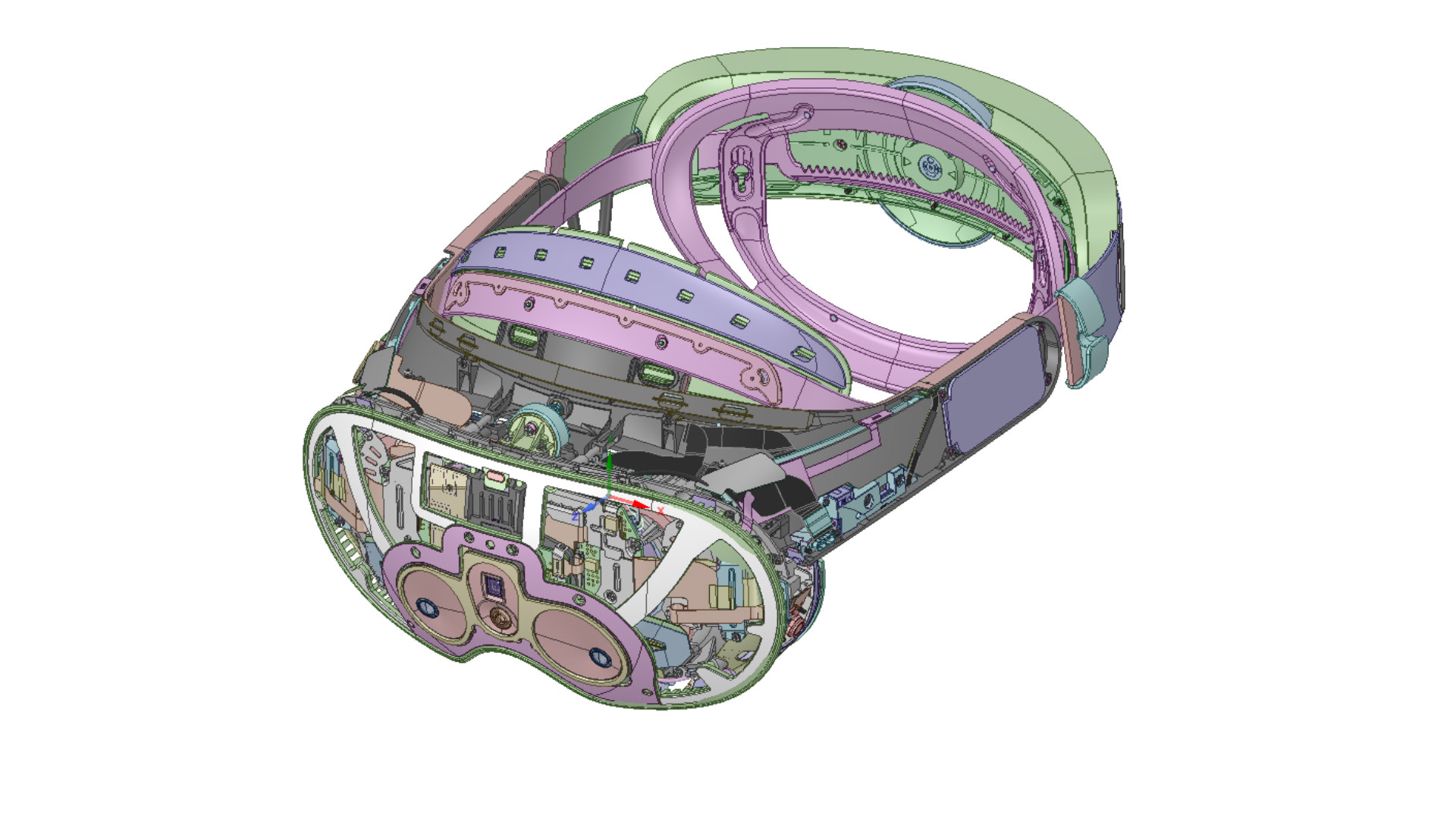Meta is still pretty camera-shy when it comes to showing off Project Cambria, the company’s upcoming high-end VR headset which offers AR passthrough. It’s been intentionally blurred for its few on-screen demos, however now we may have just gotten a look under the hood.
YouTuber and tech analyst Brad Lynch (SadlyItsBradley) released a number of images in a post on his Patreon page which appear to be CAD files of Project Cambria.
Lynch previously released a render of an alleged production version of Cambria back in April, however he says some of those details were misinterpreted. With the leaked files, Lynch says there’s a few key items he’s noticed that are included in the upcoming headset that weren’t previously apparent.
“You may notice a wire on the right side of the device. In one of the pictures its sorta coiled/curved. This is the power delivery wire that connects the battery in the back of the head strap to the HMD up front. It seems that when you adjust the strap to the ‘closest point,’ it will coil automatically. And stretch to be straight when you adjust the opposite way,” Lynch says in the Patreon post.

Lynch notes that on the headset’s left side, a clip attached to the headstrap may be for the USB-C cable that is allegedly bundled with the device.
“This is very similar to how most PC VR HMDs include a plastic clip to run a tether around comfortable their devices. I am shocked they are including this, since I figured they would push the Oculus Air Link method rather than the Oculus (wired) Link method but there it is. Especially from the fact this device is almost certain to include Wifi-6E.”
In the image above you can also make out the adjustment knob for the headset’s strap.

Lynch also posits that a knob on the front of the headset is to dial-in lens distance from the face, or similar to how the comfort dial works on Valve Index.
He also alleges the IPD mechanism is set by “grabbing the lenses themselves and moving them,” as opposed to dialing them in with some sort of wheel mechanism. Unlike Quest 2, Lynch says it offers smooth adjustments between interpupillary distance (IPD) sizes for more precise user comfort.

And what sets Cambria apart from other headsets: Lynch alleges it has two “glacier” cameras on the front left and right, and one “teton” high resolution RGB Camera in the center, the latter of which is used to colorize the monochrome stereo glacier sensors.

A supposed infrared (IR) projector is also there—a small square sitting just above the centrally located RGB sensor—which is said to provide additional depth data for environmental mapping.
Lynch has spent considerable time over the past few months datamining with fellow VR cohorts Basti564 and Samulia to track down rumors and info. Although Lynch doesn’t reveal where this info came from, he maintains its a “large leak.”
Lynch has also included a prediction of specs based on those files and other obtained info. It’s said to feature:
- 2,160 x 2,160 MiniLED Backlit LCD Panels (2)
- Custom Pancake Lenses (2)
- 16MP Color Camera for Color Passthrough
- Eye + Face Tracking (IR Camera based)
- Qualcomm XR2+ Gen 1 SoC
- 12GB LPDDR5 RAM
- 256GB SSD
- WiFi 6E Support
- ~5000 mAh battery
There’s still no precise launch information yet for Project Cambria, although Meta has gone one record saying it’s slated to be “significantly higher” than $800, making it targeted more squarely at developers and enthusiasts.
,
